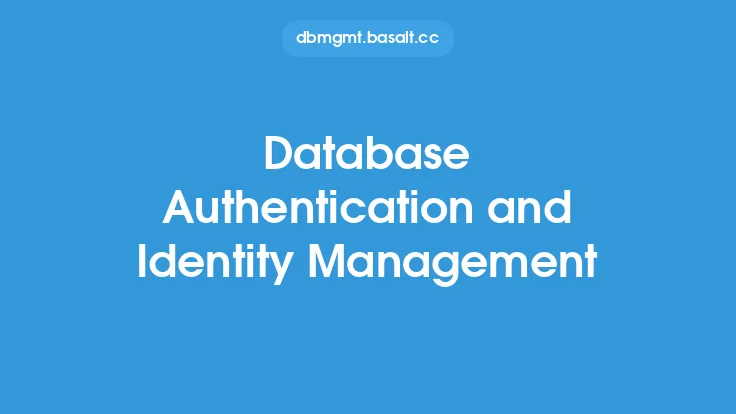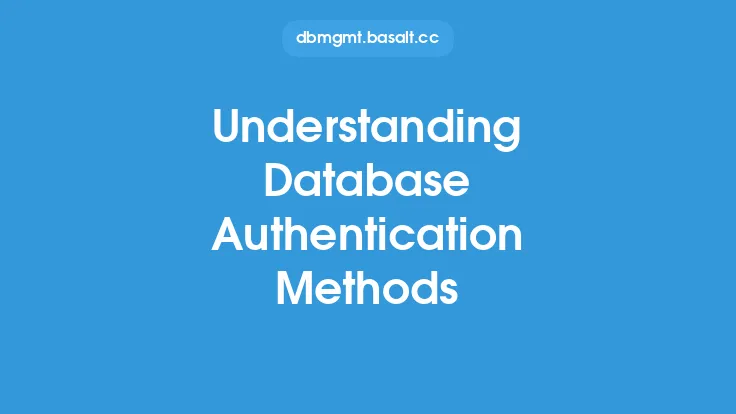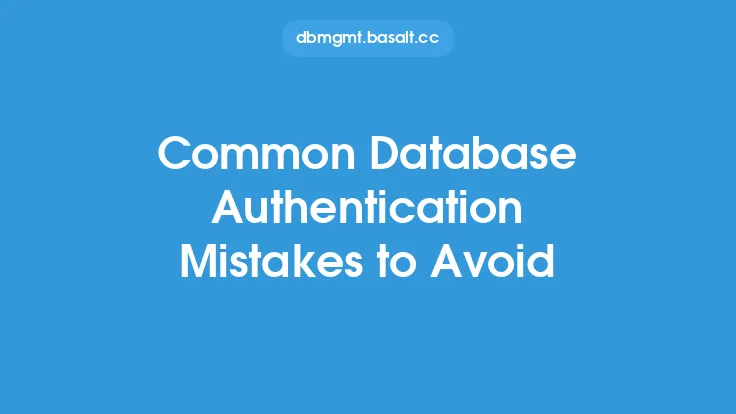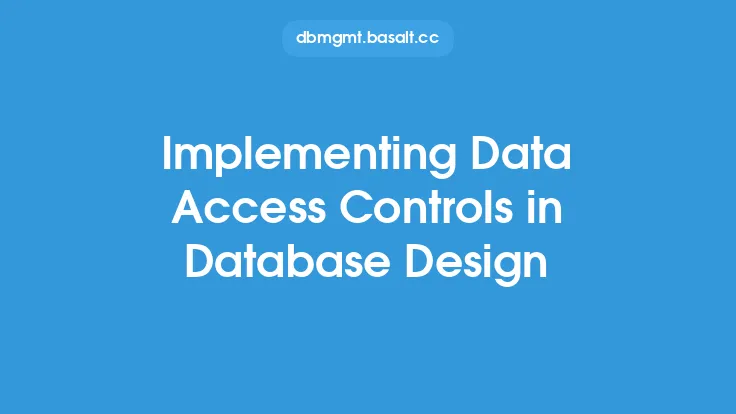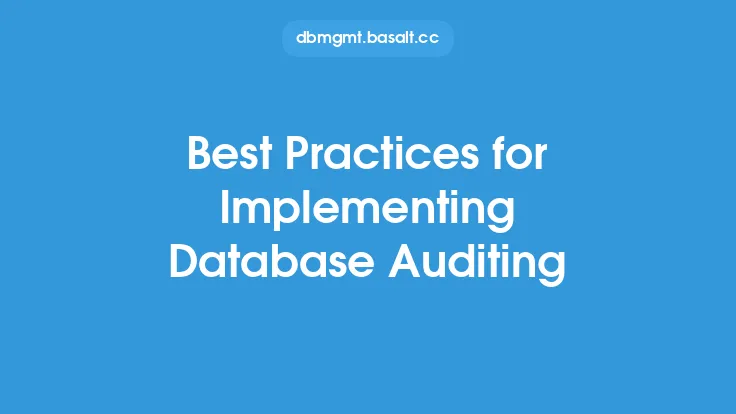Implementing secure database authentication mechanisms is a critical aspect of database security, as it ensures that only authorized users can access and manipulate the data stored in the database. A robust authentication mechanism is essential to prevent unauthorized access, data breaches, and other security threats. In this article, we will delve into the details of implementing secure database authentication mechanisms, exploring the various techniques, protocols, and best practices that can be employed to ensure the security and integrity of database systems.
Introduction to Database Authentication
Database authentication is the process of verifying the identity of users, applications, or services that attempt to access a database. The primary goal of database authentication is to ensure that only authorized entities can access the database, while preventing unauthorized access. Database authentication involves a series of steps, including user identification, password verification, and access control. The authentication process typically involves a combination of username, password, and other credentials, such as biometric data, smart cards, or one-time passwords.
Authentication Protocols and Mechanisms
There are several authentication protocols and mechanisms that can be used to secure database access. Some of the most common authentication protocols include SQL Server Authentication, Kerberos Authentication, and LDAP (Lightweight Directory Access Protocol) Authentication. SQL Server Authentication uses a username and password to authenticate users, while Kerberos Authentication uses a ticket-based system to authenticate users. LDAP Authentication uses a directory service to authenticate users and authorize access to database resources.
In addition to these protocols, there are several authentication mechanisms that can be used to enhance database security. These include password hashing and salting, which involve storing passwords in a secure format to prevent unauthorized access. Other mechanisms include multi-factor authentication, which requires users to provide multiple forms of verification, such as a password and a biometric scan, to access the database.
Implementing Secure Password Storage
Secure password storage is a critical aspect of database authentication. Passwords should be stored in a secure format, such as a hashed and salted format, to prevent unauthorized access. Password hashing involves using a one-way algorithm to transform the password into a fixed-length string of characters, known as a hash value. Password salting involves adding a random value, known as a salt, to the password before hashing it. This makes it more difficult for attackers to use precomputed tables, known as rainbow tables, to crack the password.
There are several password hashing algorithms that can be used to secure password storage, including bcrypt, scrypt, and PBKDF2. These algorithms are designed to be slow and computationally expensive, making it more difficult for attackers to use brute-force attacks to crack the password.
Using SSL/TLS for Secure Communication
SSL/TLS (Secure Sockets Layer/Transport Layer Security) is a protocol that provides secure communication between the database client and server. SSL/TLS uses encryption to protect data in transit, preventing eavesdropping and tampering attacks. When using SSL/TLS, the database client and server establish a secure connection, using a certificate-based authentication mechanism to verify the identity of the server.
To use SSL/TLS for secure communication, the database administrator must obtain a certificate from a trusted certificate authority (CA). The certificate is then installed on the database server, and the database client is configured to use SSL/TLS to connect to the server. This provides an additional layer of security, protecting data in transit and preventing unauthorized access to the database.
Access Control and Authorization
Access control and authorization are critical aspects of database security, as they determine what actions users can perform on the database. Access control involves granting or denying access to database resources, such as tables, views, and stored procedures. Authorization involves granting or denying permissions to perform specific actions, such as SELECT, INSERT, UPDATE, and DELETE.
There are several access control models that can be used to secure database access, including discretionary access control (DAC), mandatory access control (MAC), and role-based access control (RBAC). DAC involves granting access to database resources based on user identity, while MAC involves granting access based on user clearance and resource classification. RBAC involves granting access based on user role, with each role having a set of permissions and privileges.
Auditing and Logging
Auditing and logging are critical aspects of database security, as they provide a record of all database activity. Auditing involves tracking and recording all database activity, including login attempts, queries, and changes to database resources. Logging involves storing audit data in a secure location, such as a log file or a separate database.
There are several auditing and logging mechanisms that can be used to secure database access, including SQL Server Audit, Oracle Auditing, and MySQL Logging. These mechanisms provide a detailed record of all database activity, allowing database administrators to detect and respond to security threats.
Best Practices for Secure Database Authentication
There are several best practices that can be followed to ensure secure database authentication. These include using strong passwords, implementing multi-factor authentication, and using secure communication protocols such as SSL/TLS. Database administrators should also regularly review and update access control and authorization settings, to ensure that users have the necessary permissions and privileges to perform their jobs.
In addition, database administrators should regularly audit and log database activity, to detect and respond to security threats. This includes monitoring login attempts, queries, and changes to database resources, and storing audit data in a secure location. By following these best practices, database administrators can ensure the security and integrity of their database systems, protecting against unauthorized access and other security threats.
Conclusion
Implementing secure database authentication mechanisms is a critical aspect of database security, as it ensures that only authorized users can access and manipulate the data stored in the database. By using secure password storage, SSL/TLS for secure communication, access control and authorization, and auditing and logging, database administrators can protect their database systems against unauthorized access and other security threats. By following best practices for secure database authentication, database administrators can ensure the security and integrity of their database systems, protecting sensitive data and preventing security breaches.
